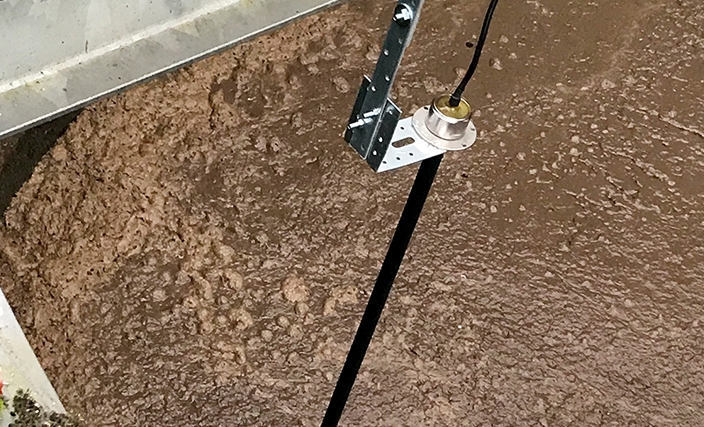If your process involves the manufacture or processing of liquids and you need to know the level of that liquid through your plant, then chances are you will start your considerations of the most suitable level sensor by looking at non-contact sensors.
Keeping sensors out of measured fluid offers seemingly obvious advantages over immersed sensors such as float or capacitive devices, particularly if the liquid has suspended solids or other matter that would clog up or accumulate on the sensor, making their data unreliable or inaccurate.
However, the introduction of an innovative new conductive level sensor from Gill Sensors means it is not the clear-cut decision it once was. Here we take a look at some of the issues faced when using the most popular technology – ultrasonic – which Gill’s new sensor helps overcome.
Temperature change affects the speed of sound waves, which alters the time-of-flight pulses from ultrasonic sensors, affecting sensor accuracy. Some ultrasonic sensors include temperature compensation but, if the temperature is measured in the sensor itself, it may be higher than the ambient temperature, particularly in direct sun. The Gill sensor remains stable across its operating temperature range of -40° to +85°C.
Foam is a natural enemy of ultrasonic sensors because it absorbs the pulses from the sensor, degrading the reflected signal making the sensor inoperable. The Gill sensor will penetrate any foam depth or density allowing it to measure the fluid level accurately underneath.
To maintain a high quality return signal, ultrasonic sensors like a reflective surface to bounce off. In many applications liquid surface can be turbulent, particularly if agitated. Disrupted surfaces will scatter the sound pulse affecting performance of the sensor. Due to its unique design, the immersed probe of the Gill sensor is unaffected by turbulence, can withstand lateral loads, providing a dependable, accurate output.
Ultrasonic sensors must be mounted to avoid coating by material or condensation. Coatings dissipate the signal, sometimes such that there is insufficient power to get the signal through the coating and back again. Regular cleaning can be one way to overcome this. Gill’s conductive level sensor has a smooth, non-stick FEP coating without any holes or cavities, meaning that it will not clog up or become coated with solids, giving reliable ‘fit-and-forget’ measurement performance – whatever it is immersed in.
To find out more about this unique sensor, visit gillsc.com/level..



